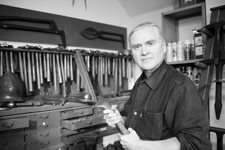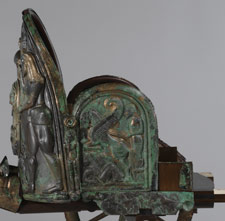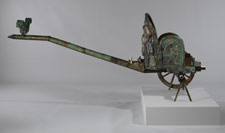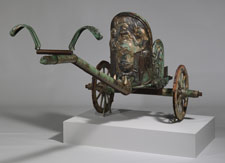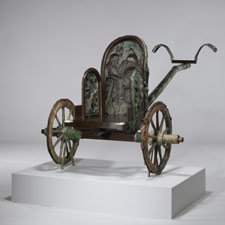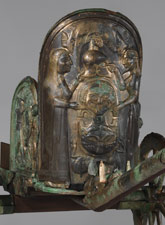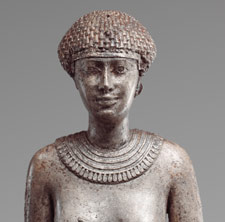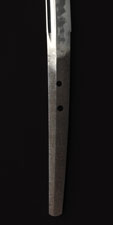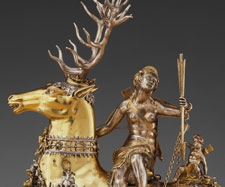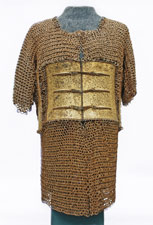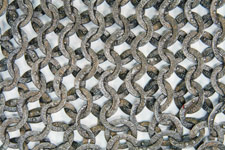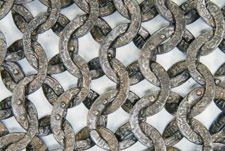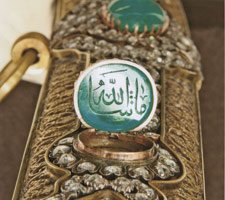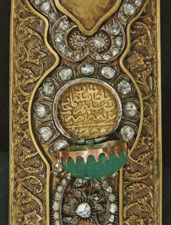New Connections appear every Wednesday. Sign up for a reminder.
Armorer Hermes Knauer reminisces about some of the beautiful objects he has rescued and on the spirituality of craftsmanship.
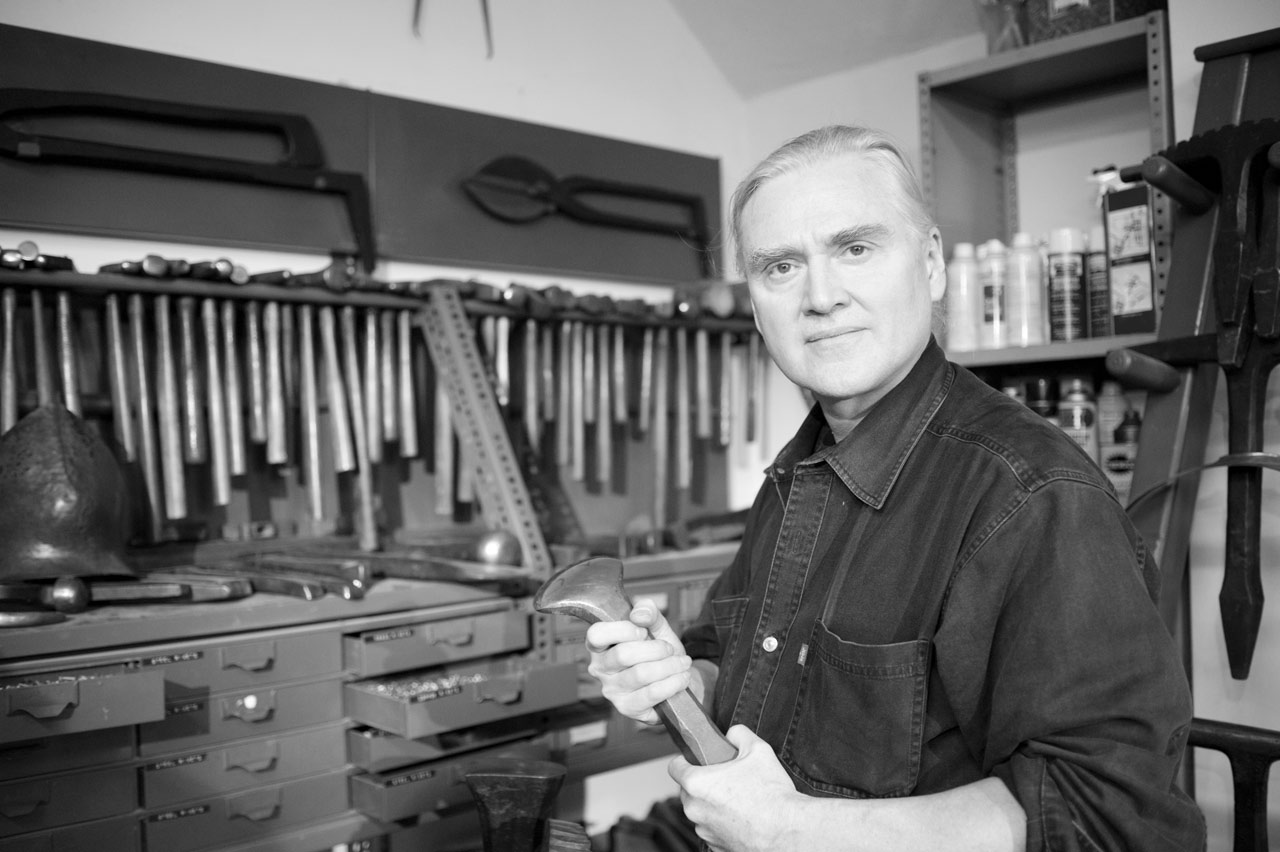 1280852
1280852 1280921
1280921 10411024
10411024 1280754
1280754 1280927
1280927 10241024
10241024 7511024
7511024 5611024
5611024 10381024
10381024 8921024
8921024 11261024
11261024 10631024
10631024 10961024
10961024 3031024
3031024 5141024
5141024 8131024
8131024 12291024
12291024 6981024
6981024 1280854
1280854 1280861
1280861 7851024
7851024 7241024
7241024 11501024
11501024 7761024
7761024 1280852
1280852
My name is Hermes Knauer. I'm the armorer in the arms and armor department in The Metropolitan Museum of Art. My topic is reverence.
I'm going to tell you a story that I got from my father who had Alzheimer's. He would ask me where I was going.
I would say, "Well, I have to go to work." And then he'd look at me and say, "Well, what is it that you do there?" And I told him, "I remove rust."
And he beckoned me closer and he said, "You can do better than that." And it was a very observant, thoughtful comment.
Saying that we remove rust or corrosion or dirt is only part of the process. Underneath all of this
age and dirt and corrosion is still something beautiful.
Sometimes it just takes a little bit of a sparkle of gold, or a little bit of silver, to kind of reveal that once, this was golden.
Reverence: it's a form of awe. The expenditure
of energy to make something like this is tremendous.
And here we are in New York, walking through a gallery, you look up and there is this incredible wonder drawing you in.
Looking at any object that has been so lovingly created speaks to me on a spiritual level, so many generations later. A lot of the names
are not known any more, but the art remains, and it will speak to future generations.
The bird over the top of the skull of this helmet indicates something almost primordial. I don't know what it means but I am drawn to it.
The Japanese sword, a ritual connecting like a chain into
antiquity. They still produce the blade in the same way. It is imbued with the spirit of those who have made it.
I do believe people have affinity for materials, and if you can harness
that, something very special is gonna happen.
I worked on a mail shirt with a very corroded and rusted surface. Looking at it through magnification
you see incredible detail. Every one of those rings has an inscription on it. They're the ninety-nine names
of Allah. I cleaned each ring front and back. While I was doing this my father was dying.
It turned out to be a form of meditation in a very chaotic time where I realized that control was slipping away. It becomes a very personal journey.
A sword that belonged to the sultan of Turkey, inset with diamonds and emeralds. As I excavated old polish, under the microscope I found the end of a rusted pin, which was part of a hinge.
On the top of the scabbard there was an opening, and what we found was an inscription in the emerald on the inside
and a gold coin from Süleyman the Magnificent. If you spend the time,incredible little secrets reveal themselves to you, and those talk to your heart. Those are the things that
speak to the better angels of our nature.
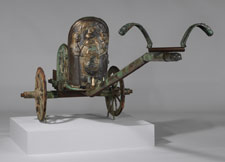 |
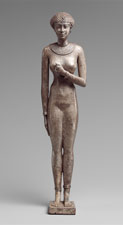 |
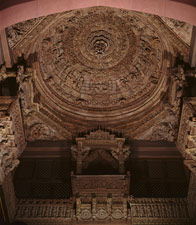 |
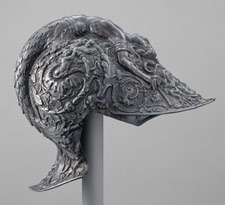 |
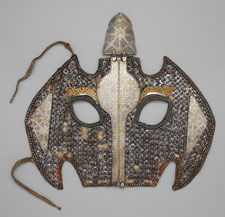 |
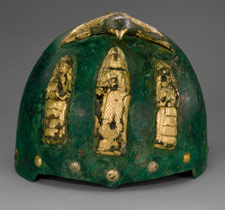 |
 |
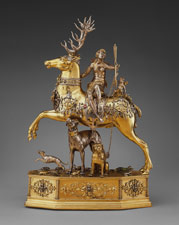 |
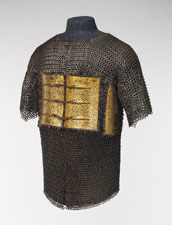 |
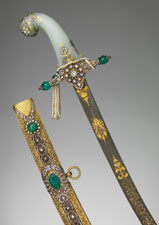 |
Works of art in order of appearanceLast Updated: June 22, 2015. Not all works of art in the Museum's collection may be on view on a particular day. For the most accurate location information, please check this page on the day of your visit. |
||
 |
Chariot late 6th century b.c. Etruscan; From Monteleone, Italy Bronze Rogers Fund, 1903 (03.23.1) More information: The Collection Online Not on view
|
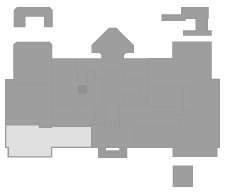 Greek and Roman ArtFirst Floor and Mezzanine
Greek and Roman ArtFirst Floor and Mezzanine |
 |
Statuette of a Woman Late Period, Dynasty 26, reign of Necho II, ca. 610–595 b.c. Egyptian Silver Theodore M. Davis Collection, Bequest of Theodore M. Davis, 1915 (30.8.93) More information: The Collection Online Not on view
|
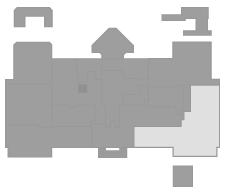 Egyptian ArtFirst Floor
Egyptian ArtFirst Floor |
 |
Architectural Ensemble from a Jain Meeting Hall last quarter of 16th century India, Gujarat, Patan Teak with traces of color Gift of Robert W. and Lockwood de Forest, 1916 (16.133,1,2) More information: The Collection Online Not on view
|
 Asian ArtSecond Floor
Asian ArtSecond Floor |
 |
Burgonet 1543 Made by Filippo Negroli Italian (Milan) Steel, embossed and damascened with gold Gift of J. Pierpont Morgan, 1917 (17.190.1720) More information: The Collection Online Not on view
|
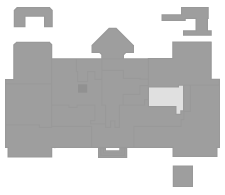 Arms and ArmorFirst Floor
Arms and ArmorFirst Floor |
 |
Head defense for a horse (shaffron) 15th–17th century Tibetan or Mongolian Iron, leather, gold, brass or copper alloy, and textile Purchase, Arthur Ochs Sulzberger Gift, 2004 (2004.402) More information: The Collection Online Not on view
|
 Arms and ArmorFirst Floor
Arms and ArmorFirst Floor |
 |
Helmet with divine figures beneath a bird with outstretched wings 14th century b.c.; Middle Elamite period Southwestern Iran Bronze; gold foil over bitumen Fletcher Fund, 1963 (63.74) More information: The Collection Online Not on view
|
 Ancient Near Eastern ArtSecond Floor
Ancient Near Eastern ArtSecond Floor |
 |
Sword blade (katana) Edo period, dated June 1622 Kanewaka, also known as Takahira (Japanese) Steel Signed and dated: Echu no kami Fujiwara no Takahira / Gen'na hachi nen rokugatsu hi Gift of Etsuko O. Morris and John H. Morris Jr., in memory of Dr. Frederick M. Pederson, 2007 (2007.478.2a, b) More information: The Collection Online Not on view
|
 Arms and ArmorFirst Floor
Arms and ArmorFirst Floor |
 |
Diana and the Stag about 1620 Joachim Friess (German) German (Augsburg) Silver, partly gilt, jewels, enamel Gift of J. Pierpont Morgan, 1917 (17.190.746) More information: The Collection Online Not on view
|
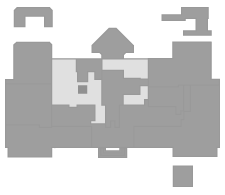 European Sculpture and Decorative ArtsFirst Floor
European Sculpture and Decorative ArtsFirst Floor |
 |
Mughal Shirt of mail and plate 1632/33 Indian Iron, gold, leather Purchase, Arthur Ochs Sulzberger Gift, 2008 (2008.245) More information: The Collection Online Not on view
|
 Arms and ArmorFirst Floor
Arms and ArmorFirst Floor |
 |
Saber 19th century; Ottoman period Turkish Steel, gold, diamonds, emeralds, pearls Gift of Giulia P. Morosini, in memory of her father, Giovanni P. Morosini, 1923 (23.232.2) More information: The Collection Online Not on view
|
 Arms and ArmorFirst Floor
Arms and ArmorFirst Floor |
© 2011 The Metropolitan Museum of Art |
||
